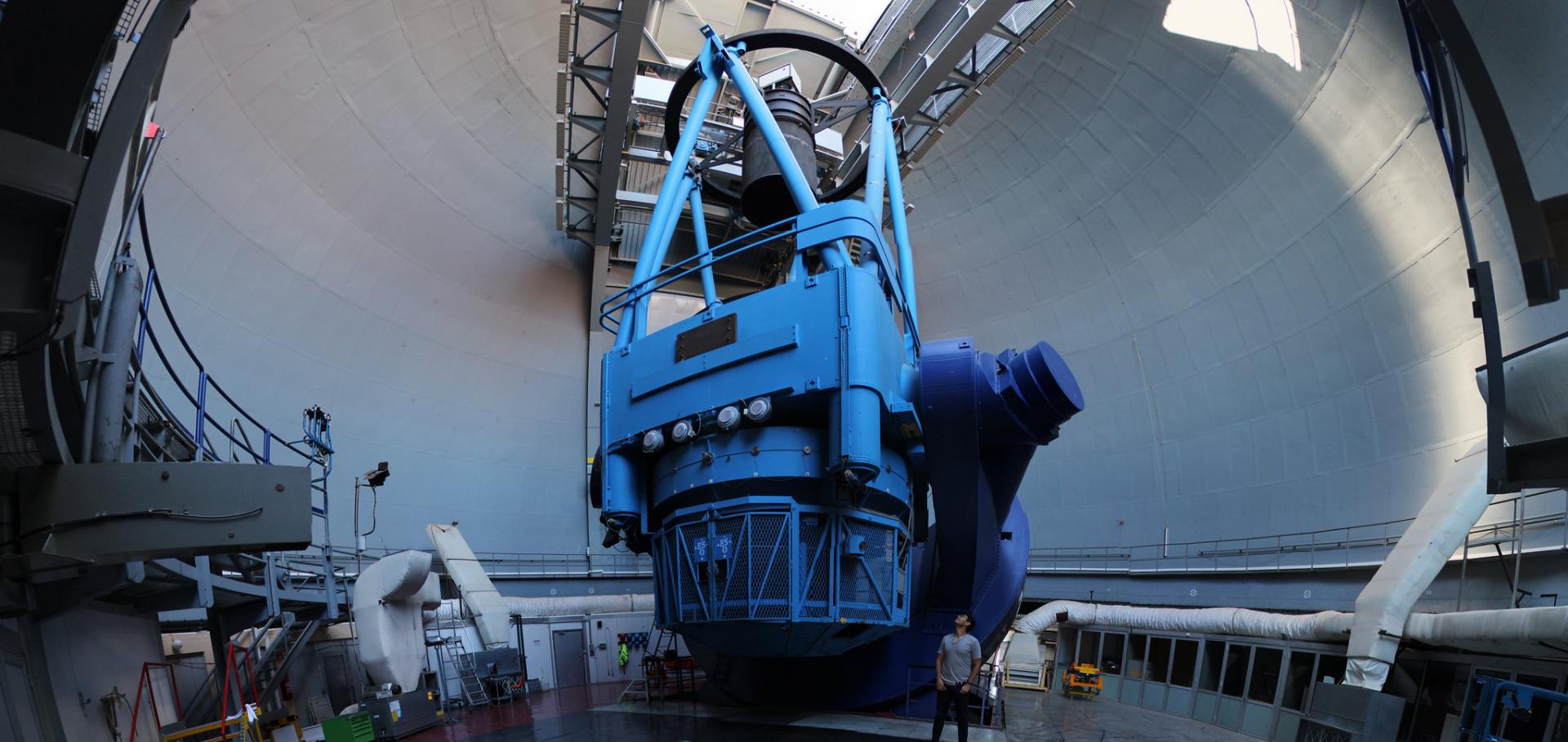Dynamical Architecture of the HD 107148 Planetary System
The Astronomical Journal American Astronomical Society 163:5 (2022) 198
One year of AU Mic with HARPS - II. Stellar activity and star-planet interaction
Monthly Notices of the Royal Astronomical Society Oxford University Press 512:4 (2022) 5067-5084
Abstract:
We present a spectroscopic analysis of a 1-yr intensive monitoring campaign of the 22-Myr old planet-hosting M dwarf AU Mic using the HARPS spectrograph. In a companion paper, we reported detections of the planet radial velocity (RV) signatures of the two close-in transiting planets of the system, with respective semi-amplitudes of 5.8 ± 2.5 and 8.5 ± 2.5 m s-1 for AU Mic b and AU Mic c. Here, we perform an independent measurement of the RV semi-amplitude of AU Mic c using Doppler imaging to simultaneously model the activity-induced distortions and the planet-induced shifts in the line profiles. The resulting semi-amplitude of 13.3 ± 4.1 m s-1 for AU Mic c reinforces the idea that the planet features a surprisingly large inner density, in tension with current standard models of core accretion. Our brightness maps feature significantly higher spot coverage and lower level of differential rotation than the brightness maps obtained in late 2019 with the SPIRou spectropolarimeter, suggesting that the stellar magnetic activity has evolved dramatically over a ∼1-yr time span. Additionally, we report a 3σ detection of a modulation at 8.33 ± 0.04 d of the He i D3 (5875.62 Å) emission flux, close to the 8.46-d orbital period of AU Mic b. The power of this emission (a few 1017 W) is consistent with 3D magnetohydrodynamical simulations of the interaction between stellar wind and the close-in planet if the latter hosts a magnetic field of ∼10 G. Spectropolarimetric observations of the star are needed to firmly elucidate the origin of the observed chromospheric variability.The EXPRES Stellar Signals Project II. State of the field in disentangling photospheric velocities
Astronomical Journal American Astronomical Society 163:4 (2022) 171
Abstract:
Measured spectral shifts due to intrinsic stellar variability (e.g., pulsations, granulation) and activity (e.g., spots, plages) are the largest source of error for extreme-precision radial-velocity (EPRV) exoplanet detection. Several methods are designed to disentangle stellar signals from true center-of-mass shifts due to planets. The Extreme-precision Spectrograph (EXPRES) Stellar Signals Project (ESSP) presents a self-consistent comparison of 22 different methods tested on the same extreme-precision spectroscopic data from EXPRES. Methods derived new activity indicators, constructed models for mapping an indicator to the needed radial-velocity (RV) correction, or separated out shape- and shift-driven RV components. Since no ground truth is known when using real data, relative method performance is assessed using the total and nightly scatter of returned RVs and agreement between the results of different methods. Nearly all submitted methods return a lower RV rms than classic linear decorrelation, but no method is yet consistently reducing the RV rms to sub-meter-per-second levels. There is a concerning lack of agreement between the RVs returned by different methods. These results suggest that continued progress in this field necessitates increased interpretability of methods, high-cadence data to capture stellar signals at all timescales, and continued tests like the ESSP using consistent data sets with more advanced metrics for method performance. Future comparisons should make use of various well-characterized data sets—such as solar data or data with known injected planetary and/or stellar signals—to better understand method performance and whether planetary signals are preserved.The young HD 73583 (TOI-560) planetary system: two 10-M-circle plus mini-Neptunes transiting a 500-Myr-old, bright, and active K dwarf
Monthly Notices of the Royal Astronomical Society Oxford University Press 514:2 (2022) 1606-1627
Abstract:
We present the discovery and characterization of two transiting planets observed by TESS in the light curves of the young and bright (V = 9.67) star HD73583 (TOI-560). We perform an intensive spectroscopic and photometric space-and ground-based follow-up in order to confirm and characterize the system. We found that HD73583 is a young (∼500 Myr) active star with a rotational period of 12.08 ± 0.11 d, and a mass and radius of 0.73 ± 0.02 M and 0.65 ± 0.02 R, respectively. HD 73583 b (Pb = 6.3980420-0.0000062+ 0.0000067 d) has a mass and radius of 10.2-3.1+ 3.4 M and 2.79 ± 0.10 R, respectively, which gives a density of 2.58-0.81+ 0.95 g, cm-3. HD 73583 c (Pc = 18.87974-0.00074+ 0.00086 d) has a mass and radius of 9.7-1.7+ 1.8 M and 2.39-0.09+ 0.10 R, respectively, which translates to a density of 3.88-0.80+ 0.91g, cm-3. Both planets are consistent with worlds made of a solid core surrounded by a volatile envelope. Because of their youth and host star brightness, they both are excellent candidates to perform transmission spectroscopy studies. We expect ongoing atmospheric mass-loss for both planets caused by stellar irradiation. We estimate that the detection of evaporating signatures on H and He would be challenging, but doable with present and future instruments.One year of AU Mic with HARPS: I-measuring the masses of the two transiting planets
Monthly Notices of the Royal Astronomical Society Oxford University Press 512:2 (2022) 3060-3078



